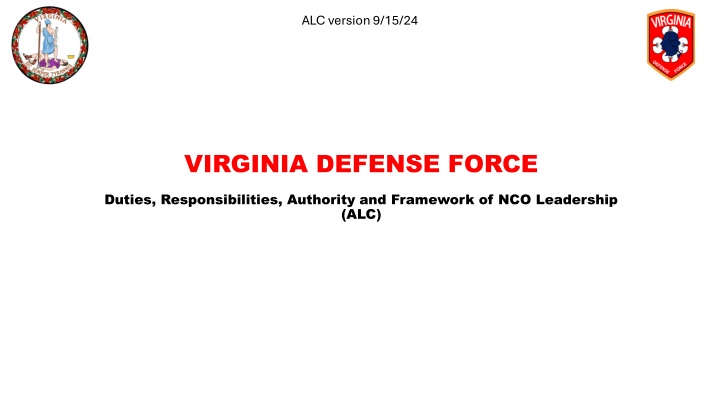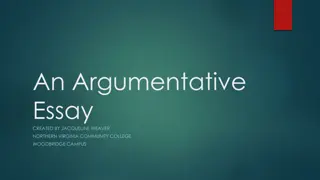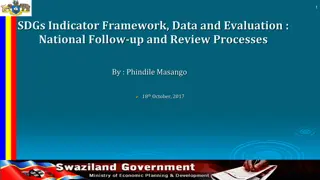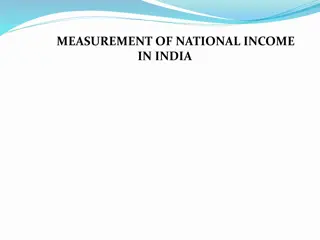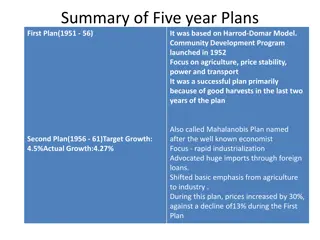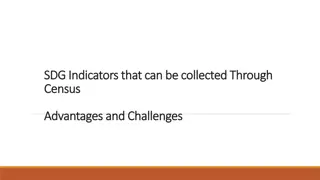National Leprosy Eradication Program in India: Challenges and Goals
National Leprosy Eradication Programme in India is burdened with a high number of new cases. The program aims to reduce prevalence rates and disabilities, with activities focusing on early detection, screening, treatment, and rehabilitation to eliminate stigma and discrimination.
Download Presentation

Please find below an Image/Link to download the presentation.
The content on the website is provided AS IS for your information and personal use only. It may not be sold, licensed, or shared on other websites without obtaining consent from the author.If you encounter any issues during the download, it is possible that the publisher has removed the file from their server.
You are allowed to download the files provided on this website for personal or commercial use, subject to the condition that they are used lawfully. All files are the property of their respective owners.
The content on the website is provided AS IS for your information and personal use only. It may not be sold, licensed, or shared on other websites without obtaining consent from the author.
E N D
Presentation Transcript
ALC version 9/15/24 VIRGINIA DEFENSE FORCE Duties, Responsibilities, Authority and Framework of NCO Leadership (ALC)
ALC version 9/15/24 Part I Duties, Responsibilities, and Authority
Definition of Authority Authority is the legitimate power of leaders to direct subordinates or to take action within the scope of their positions. Military authority in the VDF begins with the State Constitution, which divides it between General Assembly and the governor. The General Assembly has the authority to make laws that govern the VDF. The governor, as commander in chief, commands the armed forces, including the VDF. There are two types of military authority--"command' and "general military."
Command Authority Command authority is the authority leaders have when they are in a command-designated position that requires direction and control of other soldiers. Command is the authority that a commander in the armed forces lawfully exercises over subordinates by virtue of rank or assignment. Command includes the authority and responsibility for effectively using available resources to organize, direct, coordinate, employ, and control military forces so that they accomplish assigned missions. It also includes responsibility for the health, welfare, morale, and discipline of assigned personnel. Command authority originates with the governor and may be supplemented by law or regulation. It is the authority that a commander lawfully exercises over subordinates by virtue of rank or assignment. Only commissioned and warrant officers may command VDF units and installations. VDF leaders are granted command authority when they fill command designated positions. These normally involve the direction and control of other soldiers. Leaders in command- designated positions have the inherent authority to issue orders, carry out the unit mission, and care for military members within the leader s scope of responsibility.
General Military Authority General military authority originates in oaths of office, law, rank structure, traditions, and regulations. This broad-based authority also allows leaders to take appropriate corrective actions whenever a member of any armed service, anywhere, commits an act involving a breach of good order or discipline. AR 600-20, paragraph 4-5, states this specifically, giving commissioned, warrant, and noncommissioned officers authority to "quell all quarrels, frays, and disorders among persons subject to military law"--in other words, to maintain good order and discipline. An example of this is when an NCO makes an on the spot correction of a soldier from another unit.
General Military Authority All enlisted leaders have general military authority. For example, dining facility managers, platoon sergeants, squad leaders, and tank commanders all use general military authority when they issue orders to direct and control their subordinates. Military leaders may exercise general military authority over soldiers from different units. For NCOs, another source of general military authority stems from the combination of the chain of command and the NCO support channel. The chain of command passes orders and policies through the NCO support channel to provide authority for NCOs to do their job. As a noncommissioned officer, you have both general military authority and the duty to enforce policies and regulations. Failure to exercise your general military authority is neglecting your duty for which you can be held accountable.
Delegation of Authority Just as Congress and the president cannot participate in every aspect of armed forces operations, most leaders cannot handle every action directly. To meet the organization s goals, officers delegate authority to NCOs. These leaders, in turn, may further delegate that authority; leaders may delegate authority in whole or in part, unless limited by law.
Description of Duty As a noncommissioned officer, you have duties and responsibilities. As you review this material, keep in mind that your ultimate objective is to understand how duties and responsibilities interrelate. Duty begins with everything required of you by law, regulation, and orders; but it includes much more than that. You must commit yourself to excellence in all aspects of your professional responsibility. That way, when you have accomplished the mission, you can look back and say, I couldn t have given any more. You as a leader must take the initiative, figuring out what needs to be done before being told what to do.
Definition of Duty Duties fall into two separate mission categories Specified missions Implied missions
Specified Missions Specified missions come from your boss or higher headquarters and or specifically charged to an individual in official publications or orders.
Individual And Command Responsibility No definitive lines separate officer and NCO responsibilities. Officers and NCOs lead other officers and NCOs and help them carry out their responsibilities. Commanders set overall policies and standards, but all leaders must provide the guidance, resources, assistance, and supervision necessary for subordinates to perform their duties. Similarly, subordinates must assist and advise their leaders. Mission accomplishment demands that officers and NCOs work together to advise, assist, and learn from each other. Responsibilities fall into two categories--"command" and "individual."
Individual Responsibility All soldiers must account for their personal conduct. Commissioned officers and warrant officers assume personal responsibility when they take their oath. Soldiers take their initial oath of enlistment. Members of the VDF account for their actions to their fellow soldiers or coworkers, the appointed leader, their unit or organization, the Force, and the people of their state. Here is an example. A VDF member must have sufficient funds in his account when he writes a check. If the bank returns a member's check for lack of funds, he is responsible, not the superior. In other words, the individual is responsible for what he does, not his leader.
Command Responsibility Command responsibility refers to collective or organizational accountability and includes how well units perform their missions. For example, a company commander is responsible for all the tasks and missions assigned to his company; his leaders hold him accountable for completing them. Military leaders have responsibility for what their sections, units, or organizations do or fail to do.
Role of the NCO NCOs, the backbone of any military organization, train, lead, and take care of enlisted soldiers. They receive their authority from their oaths of office, law, rank structure, traditions, and regulations. This authority allows them to direct soldiers, take actions required to accomplish the mission, and enforce good order and discipline. NCOs represent officer leaders. They ensure their subordinates, along with their personal equipment, are prepared to function as effective unit and team members. While commissioned officers command, establish policy, and manage resources, NCOs conduct the VDF s daily business.
NCO Support Channel The NCO support channel parallels and reinforces the chain of command. NCO leaders work with and support the commissioned and warrant officers of their chain of command. For the chain of command to work efficiently, the NCO support channel must operate effectively. At battalion level and higher, the NCO support channel begins with the command sergeant major, extends through first sergeants and platoon sergeants, and ends with section chiefs, squad leaders, or team leaders. The connection between the chain of command and NCO support channel is the senior NCO. Commanders issue orders through the chain of command, but senior NCOs must know and understand the orders to issue effective implementing instructions through the NCO support channel. Although the first sergeant and command sergeant major are not part of the formal chain of command, leaders should consult them on all individual soldier matters.
NCO Support Channel Successful leaders have a good relationship with their senior NCOs. Successful commanders have a good leader-NCO relationship with their first sergeants and command sergeants major. The need for such a relationship applies to platoon leaders and platoon sergeants as well as to staff officers and NCOs. Senior NCOs have extensive experience in successfully completing missions and dealing with enlisted soldier issues. Also, senior NCOs can monitor organizational activities at all levels, take corrective action to keep the organization within the boundaries of the commander s intent, or report situations that require the attention of the officer leadership. A positive relationship between officers and NCOs creates conditions for success.
The Commissioned Officer Commands, establishes policy, and manages VDF resources. Integrates collective, leader, and soldier training to accomplish missions. Deals primarily with units and unit operations. Concentrates on unit effectiveness and readiness.
The Warrant Officer Provides quality advice, counsel, and solutions to support the command. Executes policy and manages the VDF systems. Command's special purpose units and task-organized operational elements. Focuses on collective, leader, and individual training. Operates, maintains, administers, and manages the VDF's equipment, support activities, and technical systems. Concentrates on unit effectiveness and readiness.
The Noncommissioned Officer Trains soldiers and conducts the daily business of the VDF within established policy. Focuses on individual soldier training. Deals primarily with individual soldier training and team leading. Ensures that subordinate teams, NCOs, and soldiers are prepared to function as effective unit and team members.
ALC version 9/15/24 Part II Framework of Leadership
Responsibility For you as a VDF leader, leadership is your primary mission and most important challenge. To meet the challenge, you must develop character and competence while achieving excellence. This lesson and the leadership lessons later in this course focus on character, competence, and excellence. Leadership is about accomplishing the mission and taking care of soldiers. It s about living up to your ultimate responsibility, leading your soldiers, and serving Virginia.
Responsibility Leadership begins with what a leader must BE, the values and attributes that shape a leader s character. Under the category of KNOW, are your skills. Skills are those things you KNOW how to do; your competence in everything, from the technical side of your job to the people skills you need as a leader. Under the last category of DO are actions. Actions are critical in being a leader. Character and knowledge are necessary; however, they are not enough. You cannot be effective as a leader unless you can apply what you know; until you act and DO what you must.
Leadership Defined Leadership is influencing people by providing purpose, direction, and motivation while operating to accomplish the mission and improving the organization. There are three key words in the definition, Influencing, Operating, and Improving. We need to explore the importance of these words. Influencing. You have influence on soldiers when you get them to do what you want them to do. It is the means or methods to achieve two ends. Operating and Improving. Notice that the words operating and improving are the other two words in the definition of leadership.
Purpose Purpose provides soldiers with a reason to do things. It does not mean that you must explain every decision to their satisfaction, but you must earn their trust. They must know from experience you care about them. They must also know you wouldn t put them in harms way unless there was a good reason, and the task was essential to mission accomplishment. Think back on your own experiences that you have had with your leaders. Did they earn your trust? Did they look out for your welfare? Did they keep you informed?
Direction You provide direction when you communicate how you want the mission accomplished. You prioritize tasks, assign responsibility for task completion, ensure resources are available, and ensure that your soldiers understand the standard. Soldiers want direction, challenging tasks, training, and resources. Once they have them, they want you to leave them alone to do the job.
Operating The second key word in the leadership definition is Operating. To successfully accomplish the mission, you take actions that will influence soldiers to accomplish their assigned tasks. The actions you can take to ensure success are: Planning Executing Preparing Assessing Planning and preparing means laying out the work and making necessary arrangements. Executing simply means to do the job and assessing means that you look at how your soldiers accomplish the job and what you can do the next time to work smarter.
Improving The third key word in the definition is Improving. The VDF expects you to strive to improve everything entrusted to you--your soldiers, facilities, equipment, training, and resources. You will get a new mission, but part of finishing the old one is improving the organization. Once you complete a task you can conduct an informal after-action review (AAR) to discover what happened, why it happened, and how to sustain strengths and improve on weaknesses. Based on the results of the AAR, you can take what you learned and improve on the actions you need to take to accomplish a task. You may need to change SOPs. Be sure you give praise to soldiers who deserve it and conduct developmental counseling to develop your soldiers as needed.
Putting It Together Study the leadership framework because it s the common basis for thinking about leadership. The leadership framework is a tool that allows you to step back and think about leadership as a whole. It gives you the big picture and can help you put your job, soldiers, and organization in perspective. Remember, the dimensions of the Army leadership framework: Values, Attributes, Skills, and Actions that support BE, KNOW, and DO. Each contains components. All the components are interrelated, none stand alone. You should think about the framework and the definition of leadership and how all the pieces work in combination to produce something bigger and better than the sum of the parts. BE the leader of character, embracing Army values and demonstrating leader attributes. Study and practice to have the skills to KNOW your job, and then act. DO what is right to achieve excellence.
Three Levels of Leadership Factors that determine a leader s level of leadership can include his span of control, headquarters level, and the extent of the influence the position exerts. Other factors include unit size or organization, type of operations, number of soldiers assigned, and planning horizon. VUCA is an acronym that stands for volatility, uncertainty, complexity, and ambiguity.It's a framework used to describe the unpredictable nature of the modern world, particularly in the context of business and organizations
Direct Leadership Primarily influencing and interpersonal in nature, this is leadership from an individual and small group, task-oriented perspective. The three words used to describe it are cohesion, procedures, and motivation. These are leaders who get things done. Your level of concern is direct leadership. This is your level--face-to face, first-line leadership. Face-to-face, first-line leadership takes place in organizations where subordinates see their leaders all the time--teams, squads, sections, platoons, companies, batteries, and troops, even at squadrons and battalions. There are a lot of levels where you can find direct leadership, and you are at two of the places mentioned, the section and squad level. Therefore, your span of influence will range within the squad. At your level there is more certainty and less complexity. You are close enough to see quickly how things work, how things don t work, and how to address problems.
Organizational Leadership Leaders at the regimental focus on planning and mission accomplishment over long time periods. Organizational leaders can influence several hundred soldiers in the VDF. Predominantly operating and maintaining in nature, these leaders deal with leadership from an organizational systems and processes perspective. Climate, policies, and direction define the focus of this leadership. These are leaders who focus inward on the organization and make sure things are working.
What a Leader Must BE-KNOW-DO So, you are a leader! Well, who says? What makes you this leader of soldiers? What ability separates you from the soldiers who, by virtue of your rank, must follow you? Are you a leader simply because you wear the stripes of a sergeant? Have you ever participated in an event, maybe a ceremony or formation, where the leader was obviously incompetent? How would you fare if someone asked your soldiers to rate you as a leader? You have learned what leadership is and how the VDF supports the development of its leaders. Now you will learn what you must Be-Know- Do to be effective as a military leader. You will learn the importance of doing a self-assessment. You will examine what it truly means to set the example. You will identify what a leader must Be-Know-Do about the job and soldiers. Finally, you ll learn why a leader must provide purpose, direction, and motivation for his soldiers.
What a Leader Must Know Army values and leader attributes form the foundation of the character of leaders. Character in turn, serves as the basis of knowing (competence) and doing (leadership). Competence means much more than being well trained; it links character and leadership together. Leaders are responsible for the competence of both self and subordinates. You will now cover the four categories containing skills a leader must know.
What a Leader Must Know Interpersonal Skills Affect how you deal with people. This includes coaching, teaching, counseling, motivating, and empowering. Conceptual Skills Enable you to handle ideas that require sound judgment as well as the ability to think creatively and reason analytically, critically, and ethically. Technical Skills Job-related abilities that include basic soldier skills. As a leader you must possess the expertise necessary to accomplish all tasks and functions assigned to your section.
What a Leader Must Know Tactical Skills Apply to solving tactical problems, that is, problems concerning employment of units in the field. You enhance tactical skills when you combine them with interpersonal, conceptual, and technical skills to accomplish a mission. As a leader you must be able to combine all these skills to be competent. In other words, employ tactical skills by combining skills from the other skill categories with knowledge of the art of tactics appropriate to their level of responsibility and unit type, to accomplish the mission. When plans go wrong and leadership must turn the tide, it is tactical skill, combined with character that enables a leader to seize control of the situation and lead his section to mission accomplishment.
What a Leader Must Do In this course you'll learn of Army values, attributes, and skills, but these are not the only things needed to prepare you for leadership. Leadership doesn t begin until you act. Leaders will succeed who live up to Army values, display leader attributes, are competent, and act at all times as they would have their people act. On the other hand, if you talk a good game but can t produce when its time to act, you will fail. In leadership you have three main functions. Influencing Operating Improving As a leader your job is influencing, operating, and improving. You must bring together everything that you are, everything that you believe, and everything that you know how to do to provide purpose, direction, and motivation. Let s look at each of these areas closer.
What a Leader Must Do Influencing Army leaders use interpersonal skills to guide others toward a goal. As a squad or section leader you often influence your subordinates face to face when you give instructions, recognize achievements, or encourage hard work. Influencing actions fall into these categories: Communicating involves displaying good oral, written, and listening skills for soldiers and groups. Decision-making involves selecting the line of action that you intend to follow as the one most favorable to success by accomplishing the mission. This involves using sound judgment, reasoning logically, and managing resources wisely. Motivating involves inspiring and guiding others toward mission accomplishment
What a Leader Must Do Operating Operating is what you do to accomplish the immediate mission to get the job done on time and to standard. Operating actions fall into three categories. Planning and preparing involves developing detailed, executable plans that are feasible, acceptable, and suitable. Arranging unit support for the operation and conducting rehearsals. During tactical operations, decision making and planning enhances two methodologies: the military-decision making process and troop leading procedures. Executing involves meeting mission standards, taking care of people, and efficiently managing resources. Assessing involves evaluating the efficiency and effectiveness of any system or plan in terms of its purpose and mission. The after-action review (AAR) allows you to review the things done right, wrong, and how to improve them, which leads us into the next area. Improving A good leader always tries to leave the section or squad in better condition than he found it. He does this by setting short-and long-term goals. While continuing to develop, build, and learn, you must train your soldiers to perform their duties technically and tactically.
What a Leader Must Do Improving A good leader always tries to leave the section or squad in better condition than he found it. He does this by setting short-and long-term goals. While continuing to develop, build, and learn, you must train your soldiers to perform their duties technically and tactically. Improving actions fall into these three categories: Developing involves investing adequate time and effort in developing individual subordinates as leaders-this includes mentoring. Building involves spending time and resources to improve teams, groups, and units and to foster an ethical climate. Learning: Involves seeking self-improvement and organizational growth, to include envisioning, adapting, and leading.
Testing The test is online. Use the below link to take the test: Duties, Responsibilities, Authority and Framework of NCO Leadership You are required to get a score of 100% and can take the test as many times as you need to.
